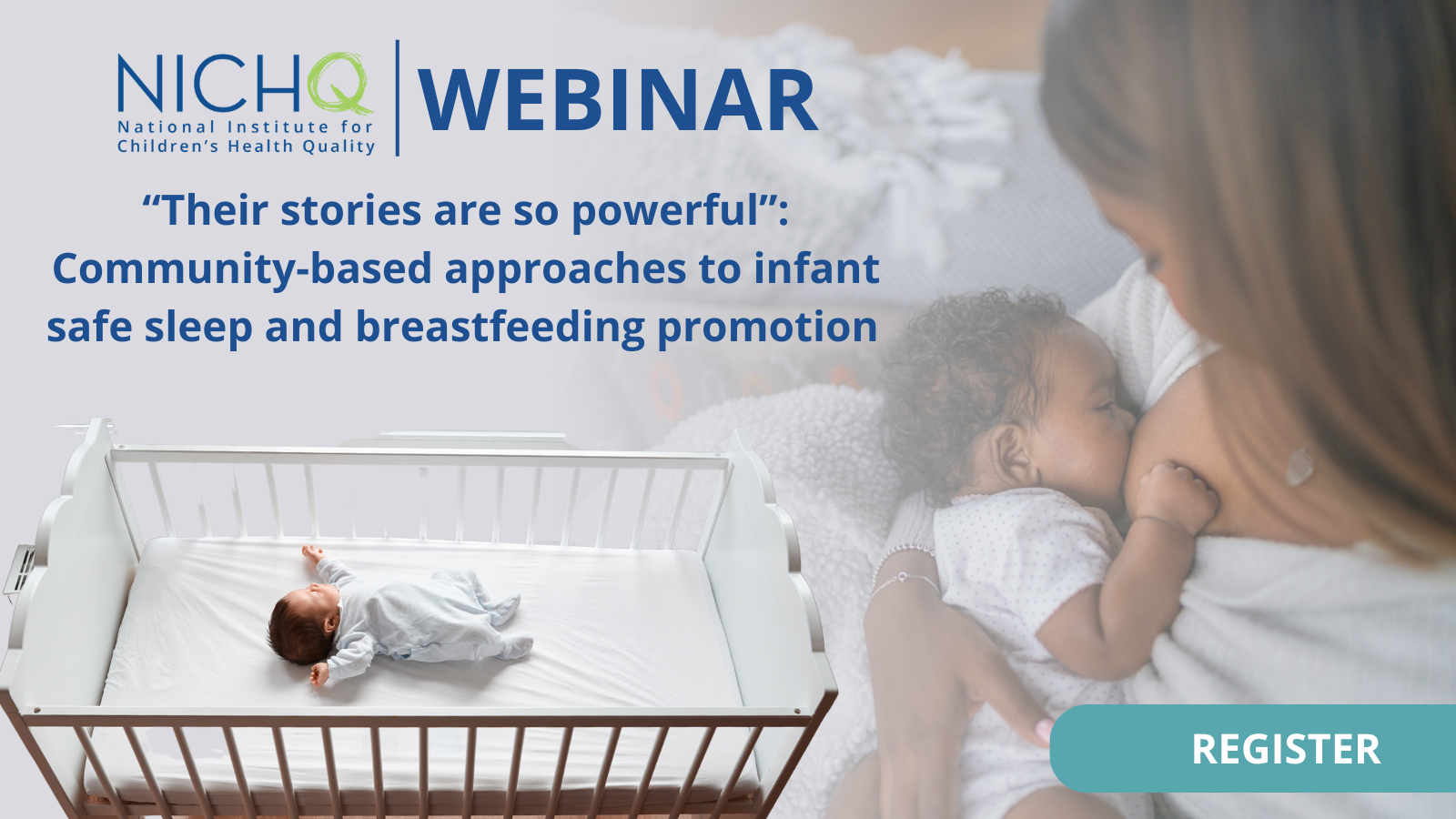Insights
Continuing Conversations Around Breastfeeding and Safe Sleep Promotion
July 27, 2023

In the U.S., significant racial/ethnic and geographic disparities exist among sudden unexpected infant deaths (SUID) and breastfeeding practices. Combining infant safe sleep (ISS) and breastfeeding promotion on the community level presents opportunities to address these racial/ethnic disparities and associated socioeconomic, cultural, and psychosocial influences.
Join NICHQ for an upcoming webinar, “Their stories are so powerful”: Community-based approaches to infant safe sleep and breastfeeding promotion, on Aug. 23. from 2-3:30 PM EST.
The webinar will highlight findings from a recent NICHQ-led study titled “Community Based Approaches to Infant Safe Sleep and Breastfeeding Promotion, a Qualitative Study,” published in BMC Public Health in March.
NAPPSS-IIN Shift to Centering Community Voices
The National Action Partnership to Promote Safe Sleep Improvement and Innovation Network (NAPPSS-IIN) project was funded by the Maternal and Child Health Bureau and the Health Resources and services Administration. The overall goal of the project was to make safe infant sleep and breastfeeding a national norm, but more specifically to promote American Academy of Pediatrics recommendations around safe sleep and breastfeeding.
NAPPSS-IIN was a five-year project with several programmatic components. Toward the end of the project, focus shifted to centering community-based organizations, and working with lactation consultants, doulas, midwives, home visitors, and others to promote safe sleep and breastfeeding within their communities.
This programmatic shift was due to the stark racial, ethnic, and geographic disparities in safe sleep and breastfeeding outcomes, and the compelling research that suggests community level promotion is an optimal setting to reach those underserved groups.
As part of the NAPPSS-IIN project shift, a series of four focus groups were held with community level providers. During these Community Listening Sessions, the NAPPSS-IIN team asked about areas where these community level providers needed additional support to meet their community needs around safe sleep and breastfeeding and for recommendations on the existing tools to improve their work on these topics.
After receiving transcripts from the interviews, NICHQ's Department of Applied Research and Evaluation (DARE) team performed a qualitative thematic analysis and identified four themes:
- Education and Dissemination
- Relationship Building and Social Support
- Working with Clients' Personal Circumstances and Considerations
- Tools and Systems
Continuing Conversations about Safe Sleep and Breastfeeding
There are a number of key findings for health providers from this study that will be addressed in the upcoming webinar. One finding that is particularly relevant for providers is around risk mitigation messaging strategies.
Many of the study’s informants shared that they perceived the predominant safe sleep and breastfeeding messages as disconnected from their clients’ everyday realities, and they were critical of the abstinence-based approaches to safe sleep promotion. Risk mitigation approaches use flexible, stigma-free methods that allow parents to implement incremental changes towards safe sleep rather than having parents and caregivers feeling overwhelmed by the prospect of fully overhauling their practices considering the social determinant factors of safe sleep and breastfeeding
Risk mitigation strategies are being embraced more and The Academy of Breastfeeding Medicine recommends using risk mitigation messaging in safe sleep and breastfeeding promotion.
Additionally, the takeaways from the study and webinar are not only useful to health professionals and community workers, but also researchers and evaluators.
While parents navigate safe sleep and breastfeeding together, more research is needed about how these two topics intertwine. For instance, the cause of sudden infant death syndrome (SIDS) is still unknown, but research overwhelmingly indicates that breastfeeding can be a protective factor against it. However, those underlying mechanisms still remain unknown.
There is also a social determinant component to safe sleep and breastfeeding, and there are substantial racial, ethnic, and geographic disparities in the outcomes. A plethora of research explores this, but it was important for NICHQ researchers to uplift the lived experience of the individuals and the communities that are impacted by these disparities.
The upcoming webinar will include a panel discussion featuring members of NICHQ’s NAPPSS-IIN project team and community partners.
Featured Speakers:
- Angeline Bell, BS, RN, CCE, CBS, Certified Childbirth Educator and Lactation Specialist, Program Manager, Babies Born Healthy, Montgomery County, MD
- Crystal Trent Paultre, MSN, RN, CBS, Community Health Nurse, Babies Born Healthy, Montgomery County, MD
- Lynnette Byfield, Community Health Worker, Babies Born Healthy, Montgomery County, MD
- Meera Menon, Ph.D., Associate Director of Research and Evaluation, NICHQ (Moderator)
- Stacy Scott, Ph.D., MPA, VP of Health Equity and Innovation, NICHQ
- Rebecca Huber, MPP, Senior Analyst, NICHQ
Join NICHQ in continuing to explore the topic of safe sleep and breastfeeding promotion. Register for “Their stories are so powerful”: Community-based approaches to infant safe sleep and breastfeeding promotion to learn more about findings from NICHQ’s study and continue conversations about implications for safe sleep and breastfeeding policies and education.
